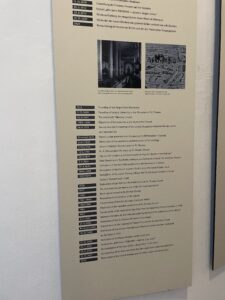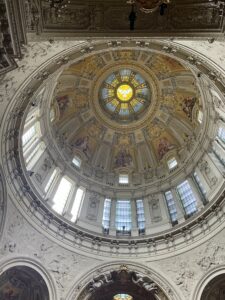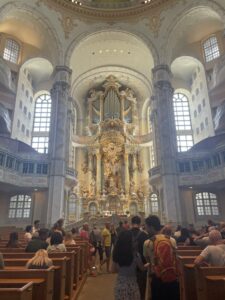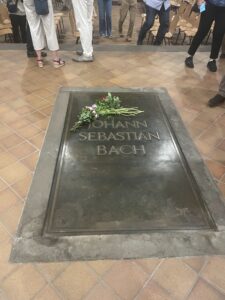“It feels so weird to clap in a Church,” I whispered to Ruth as we stood clapping for the singers who had just finished performing the “Art of Dying” cantatas. It was a new, strange, and somewhat jarring feeling for me, having grown up playing violin for a Church choir, taught to never clap or expect applause with Church music, to give standing ovations to orchestral performers and singers in both the Nikolaikirche and Thomaskirche.
Throughout this course, I was prompted to reflect on the fascinating multifaceted roles of European Churches.
First, the sites of the Churches we visited are extremely historically significant, which immensely enhanced my visits and appreciation for our concert venues. It is amazing that the Thomaskirche, for example, was visited and even frequented by figures the likes of Luther, Bach, Mozart, and Wagner. And the Nikolaikirche was renowned philosopher Leibniz’s birthplace! More recently, the Nikolaikirche was the site of the “Monday Demonstrations” that were part of the 1989 ‘Peaceful Revolution,’ mobilizing 70,000 people to walk the streets of Leipzig on the GDR’s fortieth anniversary in one of the most significant political uprisings preceding the fall of the Soviet Union. All this to say — it is incredible how much you learn and retain from a few Church panels (and a visit to the Zeitgeschichteliches Forum) – and incredible to be able to listen to concerts in these historically significant buildings!
Next, the Churches stand as symbols of riveting debate around religion, secularism, and pluralism. For instance, in the thirteenth century, the site where the Thomaskirche now stands was home to an Augustinian Monastery. That the Thomaskirche went from Catholic to Lutheran in a matter of a few centuries is fascinating — it was also cool to really be able to appreciate the importance of the religious reformation which was taught repeatedly during my high school years (also, shoutout to the Stadtgeschichtliches Museum). It made me think about how important it is to consider religious pluralism and inclusion on a larger historical scale. On a similar note, I was fascinated to learn upon my visit to the Frauenkirche in Weimar that the Church was only fully rebuilt in 2004, almost fifteen years after the fall of the Berlin Wall. Even though the Thomaskirche and the Nikolaikirche were kept in shape during the GDR years (perhaps to attract Western tourism), the Frauenkirche, facing the same fate as many religious institutions under the rule of the USSR, was left in ruins. It was not rebuilt until the eventual reunification of Germany. Even then, it had to encourage a huge fundraising campaign in order to raise sufficient funds. Its basement space included an exhibition, some ruins, and a space to reflect on the role of religious spaces in the modern age.
Finally, I found it interesting to think more about the ethics of tourism in Churches. Is it appropriate to charge people to visit religious spaces? What are the ethics of performing concerts in Churches, out of their intended religious context? What role should tourism play in these spaces?
Below: Thomaskirche History, Berlin Cathedral Dome, Frauenkirche Interior, Bach’s grave



